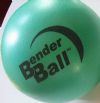|
I LOVE the Olympics and from February 12-18, I will be watching as the world comes together 'with glowing hearts' to witness as the saying goes, 'the thrill of victory and the agony of defeat' during the Vancouver Winter Olympic. A couple years back during the Beijing Summer Olympics, we learned gold medal swimmer Michael Phelps consumes 12,000 calories a day when he is in training. In stark comparison, a male of about the same age and height that is only moderately active would require around 2,000 calories a day. Do all Olympic athletes need a diet significantly different than ours? According to a recent U.S. News & World Report article, female cross country skiers may have trouble consuming the 4,000 to 5,000 calories necessary to replace what they are burning. In comparison, a male ski jumper may have trouble maintaining the more restrictive nutritionally balanced intake necessary to maintain his lean muscular body. The nutritional needs of Olympic athletes are primarily dependent on gender, sport, competition conditions, and body type as well as other more individual factors. A sports dietitian will prescribe a specific diet regimen based on a specific number of grams per kilogram of body weight for the macronutrients such as carbohydrate, protein, and fat. The workout length, frequency, and intensity are also used to determine the correct ratios. For example, intense training sports may require 7 to 10 grams of carbohydrate per kilogram of body weight whereas a lower intensity sport may only require 5 to 7 grams of carbohydrate per kilogram of body weight. Athletes that depend on strength and power such as those playing ice hockey may need 1.7 grams of protein per kilogram of body weight whereas an endurance athlete like a cross-country skier may only require 1.2 grams per kilogram of body weight. Regardless of the sport or their specific nutritional prescription, an athlete's nutritional starting point is the same as for you and me -- nutrient rich foods. A 2009 joint position statement created by the Academy of Nutrition and Dietetics (formerly the American Dietetic Association), Dietitians of Canada (DC), and American College of Sports Medicine (ACSM) related to nutrition and athletic performance states that optimal nutrition is essential for all physical activity, athletic performance and recovery from exercise. While specific guidelines may exist for specific competitors, the basic nutrition guidelines that apply to you, apply to the elite athlete as well. These basic guidelines include:
One of the unique obstacles for some winter Olympic athletes is the altitude. Higher altitudes not only dehydrate the body but also require slight increases in energy because the heart has to work harder to circulate blood adequately. Some females that struggle with adequate iron stores may also require additional iron support through diet when competing or training at high altitudes. Hydration can be a challenge in colder environments and dehydration is possible. Not only is fluid lost due to perspiration but fluid is also lost from respiration as well. Since athletes are not dripping wet with perspiration due to their layers of clothing, they may not realize how much is being lost during a workout or competition. Some female athletes require many layers of clothing that can make breaking for urination more difficult and time consuming so some may voluntarily limit fluid intake as well. Add to that the lower interest in cool fluids in cold weather and you can see how adequate hydration can be a bigger problem in cold weather activity. Coaches, trainers, and team dietitians must continually work to keep warm fluids readily available and consumed during intense cold weather training and competition. Healthy eating to reach our goals is essential for us as well as the Olympic athletes. It is reassuring to see they struggle with maintaining the correct intake and fluid balance too. Are you eating like an Olympic athlete and training hard to reach your goals? |
More From SparkPeople
|













.png)

